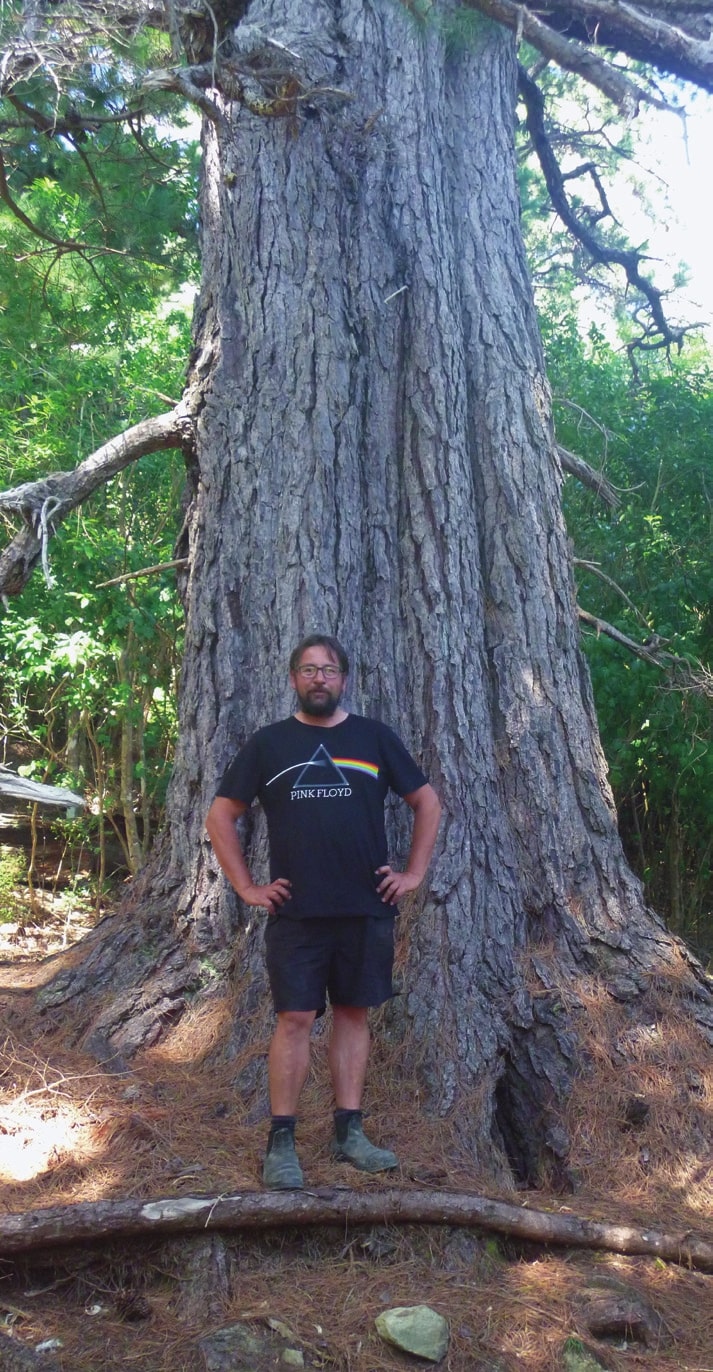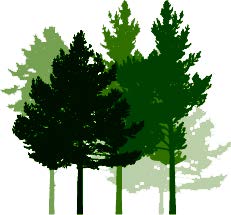Pine forests in Pelorus Sound from 1900 to 1970
Dallas Hemphill, New Zealand Tree Grower May 2021.
Forest owners find forest history to be interesting and often fascinating. It can also have practical applications with direct importance to the forest owner, as this article will illustrate.
In 2017, the National Institute of Water and Atmospheric Research (NIWA) published its report A 1,000 year history of seabed change in Te Hoiere/Pelorus Sound, Marlborough. In the report it was claimed multiple times, based on the analysis of seabed core samples, that pine logging caused extensive sedimentation on the seabed of Pelorus Sound in the early 20th century, as long ago as 1901. Miraculously, this is decades before pines were even planted on a significant scale, much less logged. We forest owners were concerned by such a claim, since the Marlborough District Council relies on this report in formulating its land use policies, directly affecting us.
In order to substantiate our disbelief, an investigation of Pelorus Sound pine forest history was carried out.
A $1,000 reward was offered, and widely publicised, for documented evidence of early 20th century pine logging in Pelorus Sound. However, no responses qualified even remotely for the reward.
The available historical documentation was reviewed, and knowledgeable individuals interviewed, in the period 2017 to 2019. Reference was also made to the paper ‘History of pine forestry in the Pelorus/Te Hoiere catchment and the Marlborough Sounds’ published last November in the New Zealand Journal of Forestry.
Pelorus Sound pine forest history
Establishment
It is generally acknowledged, but poorly documented, that radiata pine trees were planted in small numbers as shelter trees, usually around homesteads, from the late 19th century onwards. One arboretum of mixed species at Pokokini dates from the 1880s, and an adjacent radiata pine plantation of about one hectare dated from about that period. Some of the Pokokini plantation survives today, with trees up to two metres in diameter. The arboretum contains species from many countries, some of them of a similar size.
Similar small numbers of exotic trees planted in the approximate period between 1900 and 1920 are reported to have been logged many years later, in the 1970s or 1980s, at Yncyca Bay and Kenepuru Sound. The largest resource of that age class was a three to four hectare stand of mixed species in Keneperu Sound.
The earliest known pine timber plantation of commercial size was a 10 to 20-hectare block planted in Clova Bay in the 1930s. The next significant planting is believed to have been carried out around 1960 by the Harvey brothers who said they were some of the first to plant pines. The main tree planting in Pelorus Sound took place during the government Forestry Encouragement loan extension in the 1960s, followed up with grant scheme planting in the 1970s and 1980s. This financial assistance was administered by the Forest Service.

Exploitation
The first known commercial use of radiata pine was in 1941 when about 12 trees were cut at Pohuenui and towed to a mill in Havelock. It is possible that very small quantities of pine were sawn on-site for farm use before this, but on a sub-commercial scale. In 1944, two or three dozen trees were cut at Nikau Bay and milled at Okoha Bay.
From about 1950, the Harvey brothers cut small areas of pine for their mill at Manaroa. By 1960, they were cutting about one or two hectares of pine a year. At the time their mill closed in 1974 they judged that the available pine sufficient to run the mill was still a decade away from maturity.
The main plantations in Pelorus Sound, established with government assistance in the 1960s, 1970s, and 1980s, started to be logged in the late 1980s, marking the first significant volumes of pine cut in Pelorus Sound.
Comments
Numerous forest-industry sources aged between 70 and 90 years of age universally reacted with scoffs and expletives when presented with NIWA’s claim that pine timber plantations were being logged or even growing in Pelorus Sound in 1901. In the early years of the 20th century, there were countless detailed newspaper articles about the native timber industry. Advertisements by Brownlee’s, the largest mill, mention only native species, never pine.
Given that the most minute details of the native timber industry were reported, it seems implausible that something so extraordinarily unusual as pine use in Pelorus Sound would have gone unnoticed, had it happened. On the contrary, even extremely small plantings or use of pine elsewhere in Marlborough in the early 20th century was reported. In 1913 there was a report that a ‘few’ pine trees had been cut for timber in the Wairau valley. Industrial-scale exploitation of radiata pine in Pelorus Sound, had it occurred, would surely have attracted media attention.
Frank Ponder, in his 1986 history A Labyrinth of Waterways, gave a detailed account of early-day logging and sawmilling operations in Pelorus Sound. He described entirely native timber operations, with no mention of pine, until after 1940. Our investigations confirmed that there was no pine logging on a substantial commercial scale in Pelorus Sound until the late 1980s, more than 80 years after NIWA purported to prove that pine logging contributed substantial sediment in 1901.
Why does this matter?
NIWA’s anachronistic finding means that the report in its entirety is not credible. Once forest owners realised this, a closer examination of the report revealed it to have numerous scientific flaws, many of them fatal to NIWA’s findings The conclusion that pine forests contribute sediment disproportionately compared to other land uses is therefore not credible, and allows us to argue against the use of the report by Marlborough District Council in formulating its land use policies.
At the time of writing, Marlborough District Council sees nothing anomalous in the NIWA findings
While this is of the most direct importance to forest owners in the Marlborough Sounds, growers elsewhere in New Zealand need to be concerned. We understand that NIWA has employed the same science elsewhere, with equally anomalous results.
Furthermore, our detractors throughout New Zealand are quoting the report as proof of the environmental damage caused by trees. We need to be vigilant when faux science is published that attacks our interests. Faulty science which feeds into the bias of anti-forestry interests is likely to be readily accepted by like-minded bureaucrats and politicians, and used directly against us.
Dallas Hemphill is an NZFFA member living in Pelorus Sound.

 Farm Forestry New Zealand
Farm Forestry New Zealand